Steps to constructing a rain garden:
Measure the area of roof that uses your downspout.
- Measure only the footprint of your house; don't calculate the rise of your roof. Remember, the same amount of rain falls on your roof regardless of the roof's pitch.
- Often a gutter will have downspouts at two ends. In this case, assume half the water will go to each downspout.
Example:

|
|
Divide the area by 3. (If your soil is very sandy, as are most soils found in the Weems Creek Watershed, you can divide by 5 instead.) This is the size that your rain garden needs to be to hold water from a 1-inch rainstorm.
House footprint is 30 x 30. One-quarter of the footprint drains to a single downspout. The footprint of this area is:
15 x 15 = 225 sq. ft
225 sq. ft. / 3 = 75 sq. ft.
225 sq. ft. / 5 = 45 sq. ft.
Therefore, the rain garden should be between 45 and 75 sq. feet, depending on how sandy the soil is.
|
Dig a garden that is 3 inches deep on average.
- You will most likely need to improve the soil. Dig your garden 5 - 6 inches deep, then add humus to return it to an average 3 inch depth.
- You can use some of the diggings to create a berm on the lower side of you garden if you do not have a level area.
- Use a "water test" to adjust the water flow and depth of the rain garden. Place your hose at your downspout and turn on full. You'll be able to see where the water will go in a rainstorm and make adjustments so that the full garden area is utilized. This method works much better than a carpenter's level!

A rain garden dug to an average depth of 3 inches. The bank on one side of the garden is higher than 3 inches because the yard slopes slightly. The "water test" was used to adjust the overall depth of the garden.
|
Add plants.
- Plant as you would for any other garden. Mulch well, and keep watered for the first year.
- Make sure the plants you add can tolerate both wet and dry spells.
- Plant for the amount of sun you get.
- Use Native Plants as much as possible. If you simply must put a non-native plant in, at least make sure it is not an invasive non-native.
- Use our plant lists and sample designs from Homestead Gardens to help you.
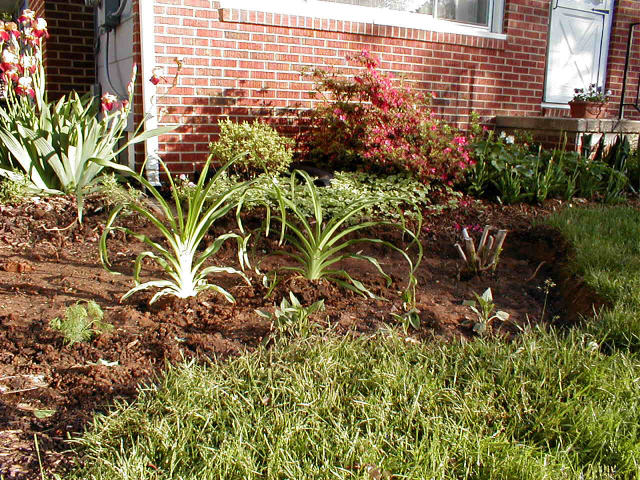
See layout for the plants used in this rain garden.
|
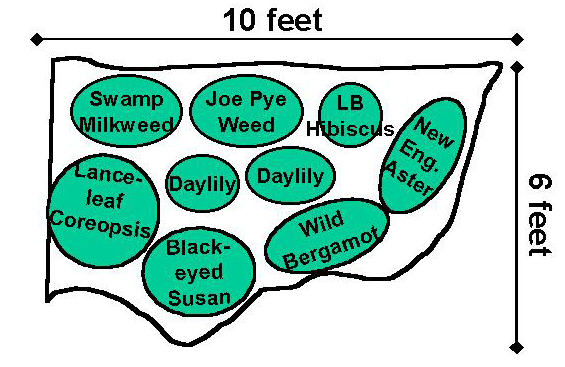
Swamp milkweed, Joe Pye Weed, New England aster, Wild Bergamot, and Black-eyed Susan are native to the Chesapeake region.Lord Baltimore hibiscus is a hybrid of the native hibicus,Lance-leaf Coreopsis is native to the Midwest. Kwanso daylily is native of China.
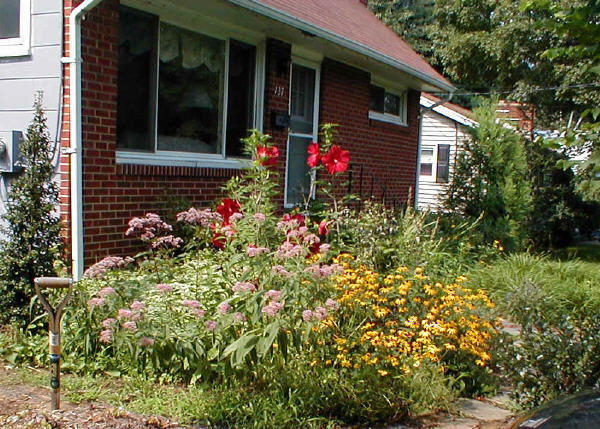
Once established, it's hard to tell a rain garden from a "normal" garden..
|
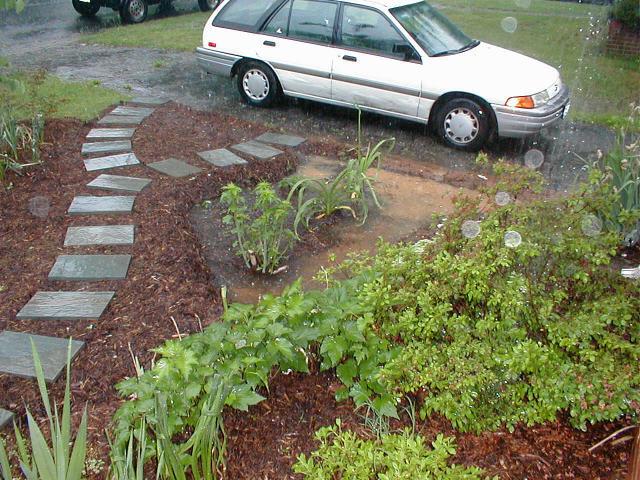
The rain garden at the height of our rainstorm on 5-18-2002. The garden filled with water, but did not overflow. Within 2 hours after the rain ended, all the water had infiltrated into the ground. Note that "muddy" looking areas are in spots where future plants are to be placed. Mulched areas (which will cover the entire garden once completed) had clear water.
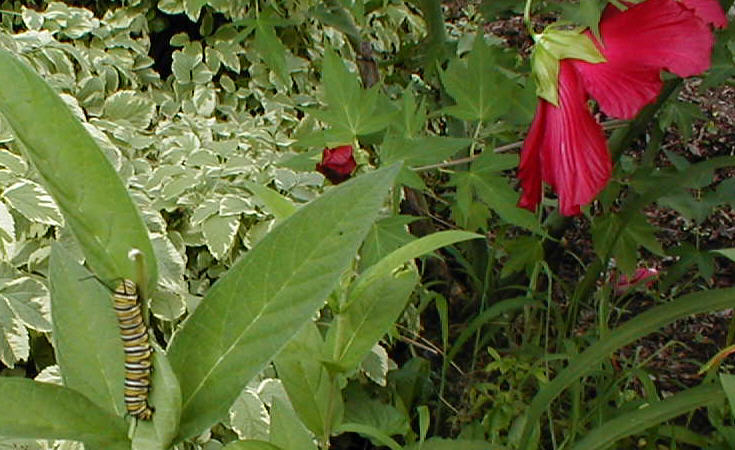
Build it and they will come. This monarch caterpillar (on left) found the swamp milkweed in the rain garden the first year it was planted.
| | | | |


 New Postings
New Postings Board
Board